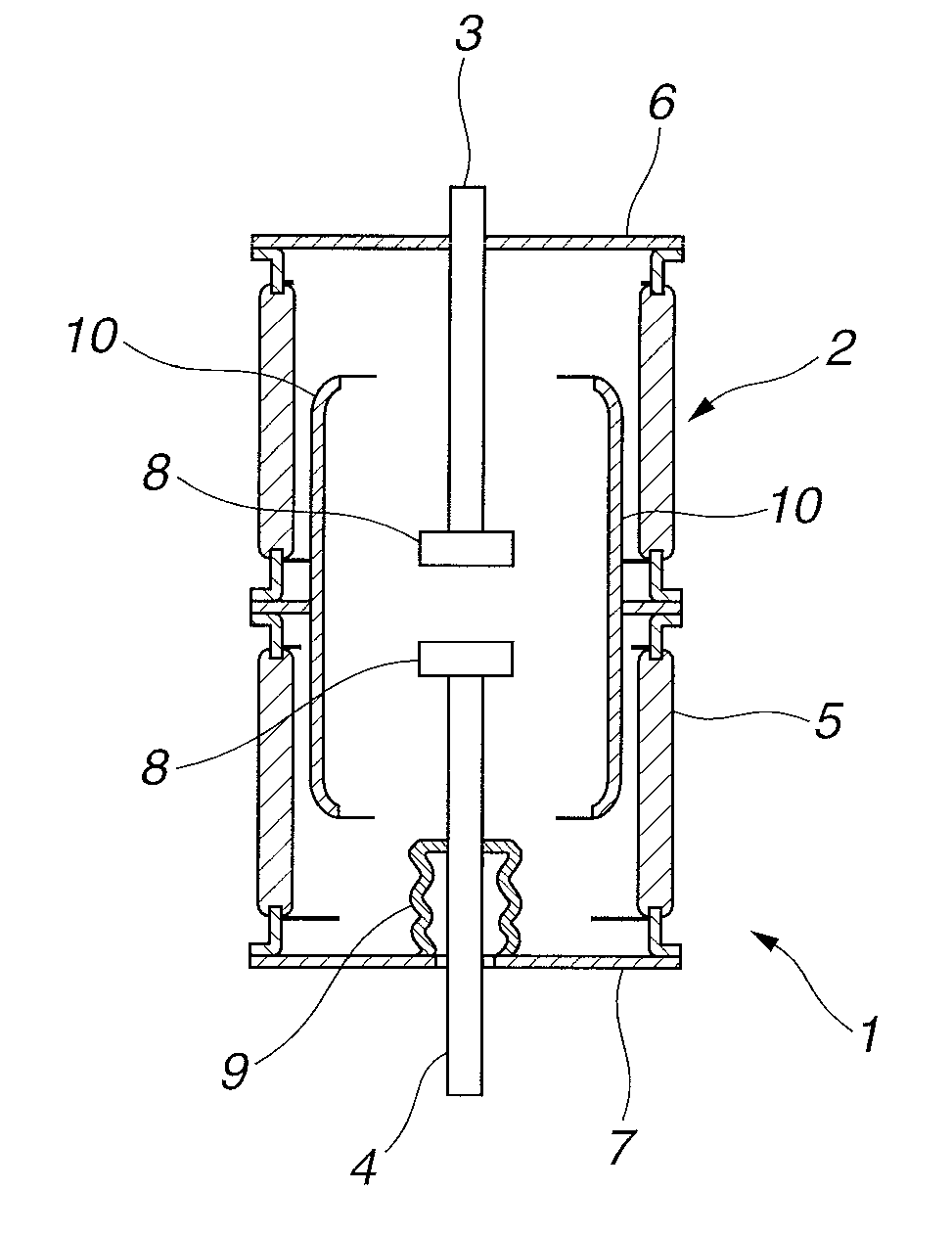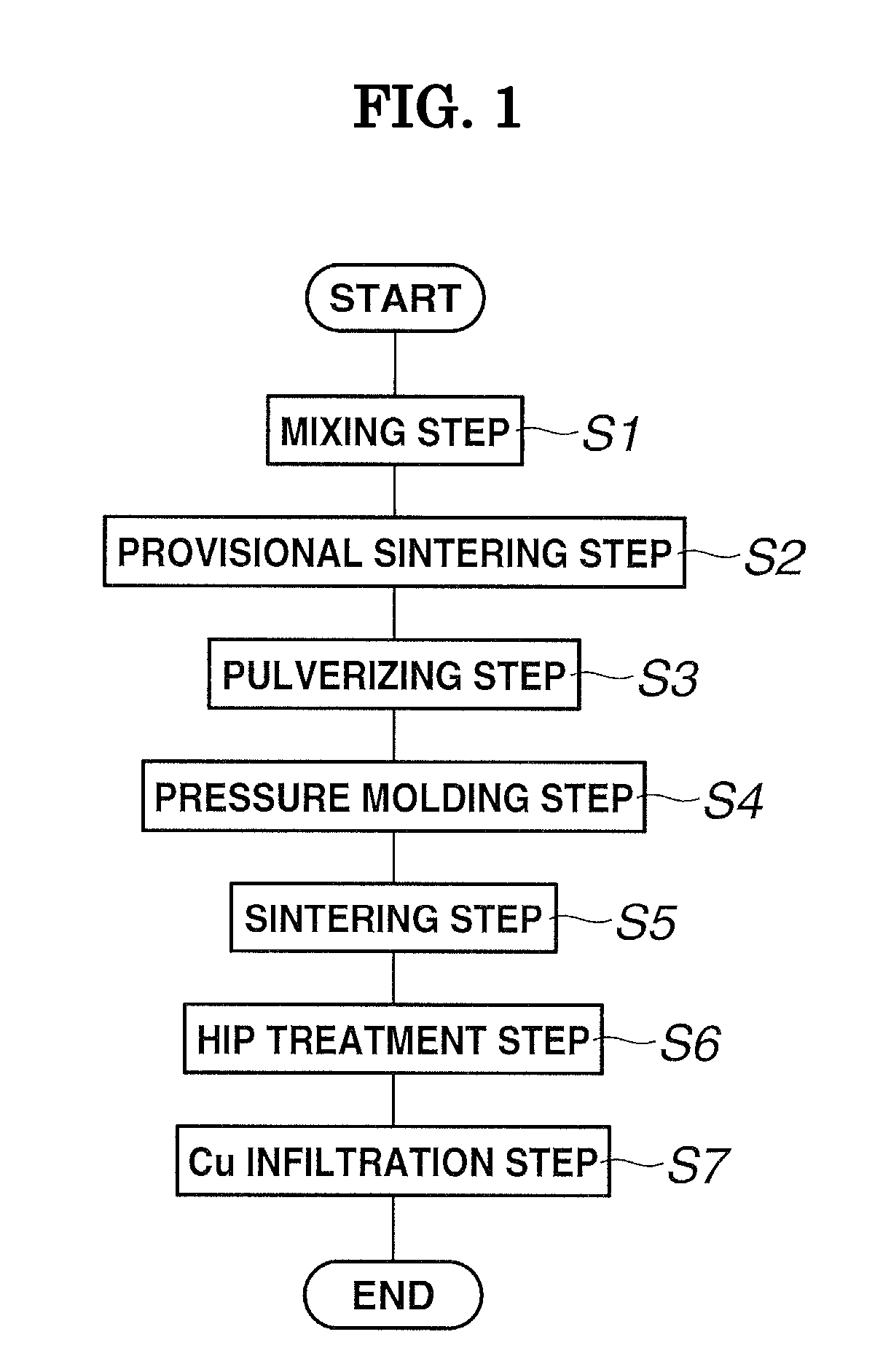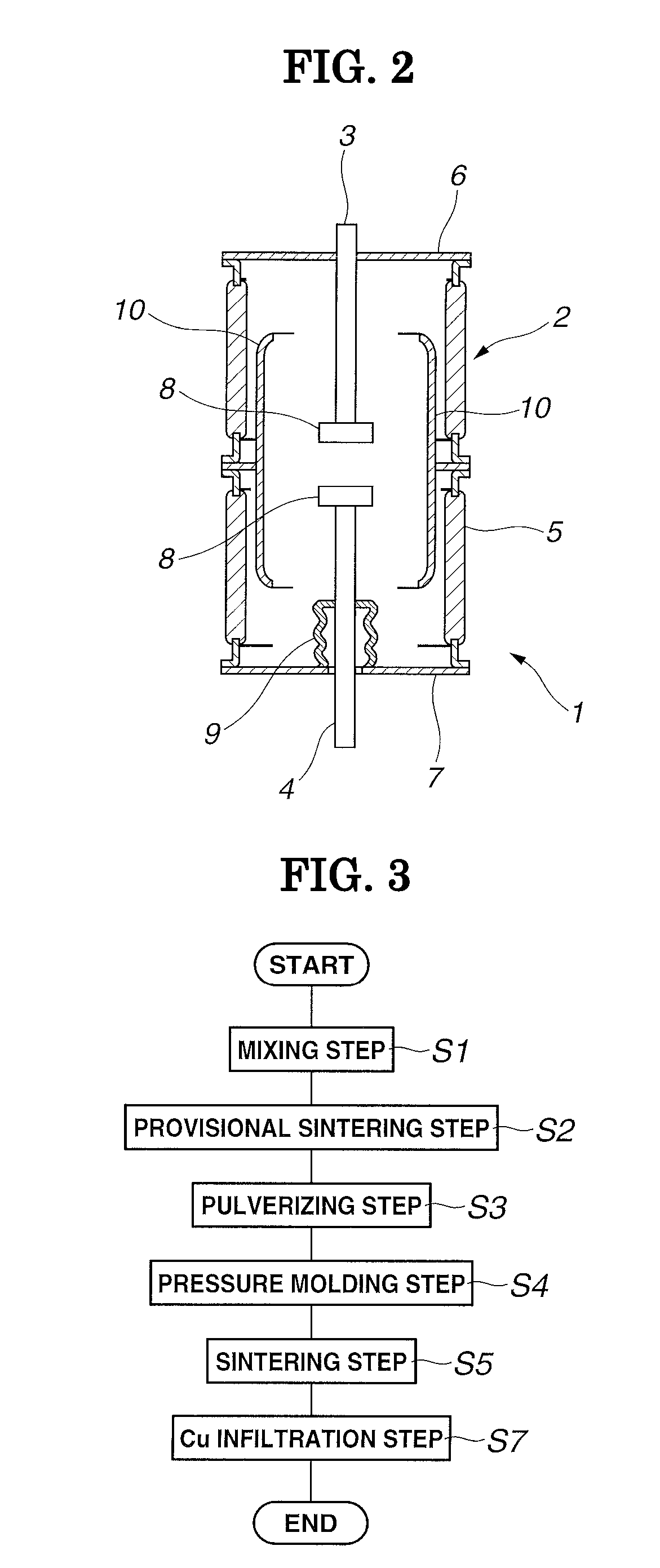Method for manufacturing electrode material and electrode material
- Summary
- Abstract
- Description
- Claims
- Application Information
AI Technical Summary
Benefits of technology
Problems solved by technology
Method used
Image
Examples
example 1
[0049]Referring now to a concrete example, a method for producing an electrode material and an electrode material according to an embodiment of the present invention will be discussed in details. An electrode material of Example 1 is an electrode material produced according to the flow chart as shown in FIG. 1.
[0050]A Mo powder and a Cr powder were sufficiently uniformly mixed at a weight ratio of Mo:Cr=9:1 as a mixing ratio by using a V type blender.
[0051]As the Mo powder, a powder having a particle diameter of 0.8 to 6.0 μm was employed. As the result of measuring the particle diameter distribution of this Mo powder by using a laser diffraction particle size analyzer, it was confirmed to have a median diameter d50 of 5.1 μm (and d10 of 3.1 μm and d90 of 8.8 μm). The Cr powder was a powder of −325 mesh (mesh opening of 45 μm).
[0052]After the mixing operation was completed, the mixed powder containing the Mo powder and the Cr powder was moved into an alumina container, followed by c...
reference example 1
[0062]An electrode material of Reference Example 1 is an electrode material produced by the same procedure as that of Example 1 with the exception that the HIP treatment is not performed. The electrode material of Reference Example 1 is an electrode material produced according to the flow chart as shown in FIG. 3. In the flow chart as shown in FIG. 3, steps common with Example 1 are given the same reference numeral; therefore, specific explanations on such steps are omitted.
[0063]A Mo powder and a Cr powder were mixed at a weight ratio of Mo:Cr=9:1. A mixed powder was provisionally sintered, and an obtained Mo—Cr solid solution was pulverized. Pressure molding was conducted to a powder obtained by pulverizing the Mo—Cr solid solution under a pressing pressure of 2.3 ton / cm2 to obtain a molded body having a diameter of 60 mm and a height of 10 mm. This molded body was subjected to a heat treatment in a vacuum atmosphere at 1150° C. for 1.5 hours, thereby producing a sintered body. A ...
example 2
[0064]An electrode material of Example 2 is an electrode material produced by the same procedure as that of Example 1 with the exception that the pressure applied in the pressure molding step S4 is modified.
[0065]As shown in FIG. 1, a Mo powder and a Cr powder were mixed at a weight ratio of Mo:Cr=9:1. A mixed powder was provisionally sintered, and an obtained Mo—Cr solid solution was pulverized. Pressure molding was conducted to a powder obtained by pulverizing the Mo—Cr solid solution under a pressing pressure of 3.5 ton / cm2 to obtain a molded body having a diameter of 60 mm and a height of 10 mm. This molded body was subjected to a heat treatment in a vacuum atmosphere at 1150° C. for 1.5 hours, thereby producing a sintered body. A filling rate of the sintered body was 54.9%. On this sintered body, a HIP treatment was performed at 1050° C., 70 MPa for 2 hours. A filling rate after the HIP treatment was 68.6%. The HIP-treated body was then infiltrated with Cu to serve as the elect...
PUM
| Property | Measurement | Unit |
|---|---|---|
| Fraction | aaaaa | aaaaa |
| Temperature | aaaaa | aaaaa |
| Electrical resistance | aaaaa | aaaaa |
Abstract
Description
Claims
Application Information
 Login to View More
Login to View More - R&D
- Intellectual Property
- Life Sciences
- Materials
- Tech Scout
- Unparalleled Data Quality
- Higher Quality Content
- 60% Fewer Hallucinations
Browse by: Latest US Patents, China's latest patents, Technical Efficacy Thesaurus, Application Domain, Technology Topic, Popular Technical Reports.
© 2025 PatSnap. All rights reserved.Legal|Privacy policy|Modern Slavery Act Transparency Statement|Sitemap|About US| Contact US: help@patsnap.com



